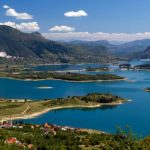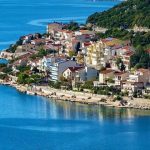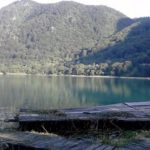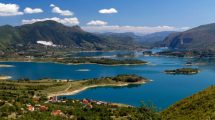For years, it’s been hard to escape the impression that Stolac is convincingly the most underrated tourist destination in our rich offerings. Whether the issue lies in its relative distance from major routes, lack of marketing, or something entirely “tenth,” it’s hard to say, but Stolac and its surroundings have much to offer.
From Illyrians to Romans
In the vicinity of Stolac lies one of the oldest remains of a populated place in Bosnian archaeology. The former city of Daorson got its name from the Hellenized Daorsi tribe that lived in these areas approximately 2,300 years ago. The remains at the site reveal a city surrounded by walls almost 2 meters thick, and among other artifacts, ancient bronze helmets adorned with figures from Greek mythology were discovered.
It’s worth noting the remains of the Roman city of Diluntuma, believed to have been located in the present-day part of Stolac called Podgrad. More precisely, mosaics from the Roman era have been discovered, mostly depicting wild animals, while one mosaic portrays the mythical figure of the Minotaur. These mosaics are housed in the National Museum of Bosnia and Herzegovina in Sarajevo.
Vidoški Fortress – Epic Appearance
Vidoški Fortress is one of Stolac’s symbols, a monumental fortified town with as many as 13 towers first mentioned in the mid-15th century. Inside the fortress, which served not only military purposes but also housed residential and religious structures, the current remains are not in great condition. Nevertheless, this historical monument appears truly monumental and is well worth attention and a visit.
Stećci – medieval tombstones
The Stolac region abounds with indigenous monuments of Bosnian-Herzegovinian history – stećci (medieval tombstones). Three necropolises around the city – Radimlja, Potkuk, and Boljuni – have been inscribed on the UNESCO World Heritage List. Radimlja, in particular, is one of the most valuable medieval monuments in Bosnia and Herzegovina.
Radimlja is the largest stećci necropolis in Bosnia and Herzegovina, with 133 tombstones of various shapes and sizes. The three so-called “duke” figures, depicting a person with a raised hand, garner the most attention. These have become a recognizable symbol of stećci and that period in our history.
Bazaar and Begovina
The market in Stolac, like other bazaars, emerged during the Ottoman rule. At the heart of the market is the Čaršijska Mosque, built in the early 16th century, considered the oldest building in the old part of the town. Originally, the bazaar also housed a madrasa, harem, han, and musafirhana. With the later expansion of the bazaar, the Podgradska and Ćuprijska mosques were built, along with additional harems and madrasas, and the sahat-kula.
Begovina was also built during the Ottoman period but is located outside the old bazaar. It was the residential complex of the ruling Rizvanbegović family. Initially surrounded by walls, Begovina contained a madrasa, five traveler’s konaks, and various additional facilities. Unfortunately, Begovina suffered severe damage during the recent war and has been only partially restored.
Interesting Facts and Legends
Stolac harbors a large number of intriguing stories. Just a few kilometers from the city lies the grave of Moshe Danina, the supreme rabbi in Bosnia and Herzegovina in the early 19th century. Mosha was unjustly imprisoned and vowed to go on a journey to Palestine during his sentence. He wished that, if he died on the way, he be buried where he passed away. Fate decided that his death would occur just before Stolac, where his grave and a monument with an epitaph are located.
Three bridges in Stolac, Inat Bridge, Ćuprija Sare Kašiković, and Podgradska Bridge, hide interesting stories and legends. We leave it to you to hear them from the local population and guides.
Be sure to visit Makova Hiža. Ah, yes, “Makova” refers to Mako Dizdar, born in Stolac. Hiža is not the place where he was born or lived but a specific art house that preserves the memory of Mako Dizdar.
Explore our historical and cultural gem Stolac and discover all its charms. Source: Klix






























